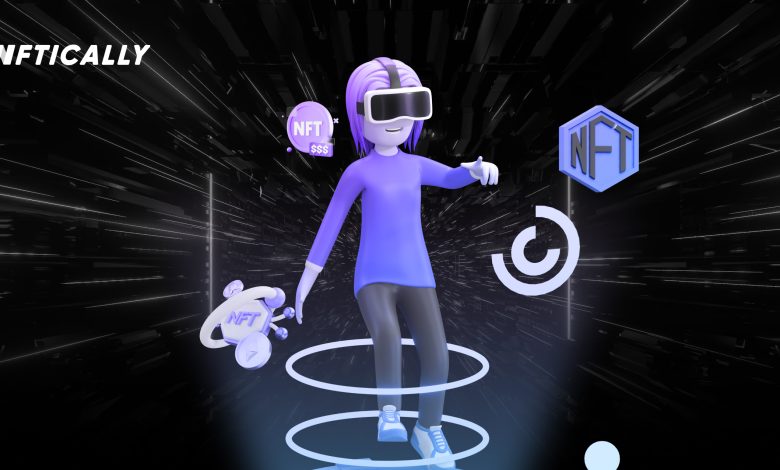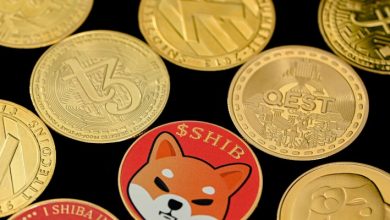Predicting the Future of NFTs

- Understanding the current NFT landscape
- Exploring the potential impact of NFTs on various industries
- Challenges and opportunities in the NFT market
- Emerging trends in NFT technology
- Regulatory considerations for the future of NFTs
- Predictions for the mainstream adoption of NFTs
Understanding the current NFT landscape
The current landscape of non-fungible tokens (NFTs) is rapidly evolving, with new projects and platforms emerging regularly. NFTs have gained significant popularity in recent years, with artists, musicians, and even sports teams getting involved in the space. These digital assets represent ownership of unique items or pieces of content on the blockchain, allowing for provenance and scarcity to be easily verified.
One of the key aspects of the current NFT landscape is the diversity of projects available. From digital art and collectibles to virtual real estate and in-game items, there is a wide range of NFTs to choose from. This diversity has attracted a broad audience, including both collectors and investors looking to capitalize on the growing market.
Another important factor to consider is the technology behind NFTs. Most NFTs are built on the Ethereum blockchain, which provides a secure and decentralized platform for buying, selling, and trading digital assets. However, other blockchains, such as Binance Smart Chain and Flow, are also gaining traction in the NFT space, offering different features and capabilities.
In addition to the technology, the community surrounding NFTs plays a crucial role in shaping the future of the market. Artists, collectors, developers, and enthusiasts all contribute to the growth and adoption of NFTs, creating a vibrant ecosystem of creativity and innovation. This community-driven approach has helped NFTs gain mainstream attention and establish themselves as a legitimate asset class.
Overall, the current NFT landscape is dynamic and full of potential. As the market continues to mature and evolve, we can expect to see new use cases, partnerships, and innovations that will shape the future of NFTs. By staying informed and actively participating in the NFT community, individuals can position themselves to take advantage of the opportunities that lie ahead in this exciting and rapidly expanding market.
Exploring the potential impact of NFTs on various industries
Exploring the potential impact of NFTs on various industries is crucial in understanding the future landscape of digital assets. NFTs have the ability to revolutionize sectors such as art, music, gaming, and real estate by providing a unique way to authenticate and trade digital assets. In the art world, NFTs have already disrupted traditional art markets by allowing artists to directly sell their work to collectors without the need for intermediaries.
Moreover, the music industry is also seeing the potential of NFTs to create new revenue streams for artists through the tokenization of music rights and royalties. This innovation could empower musicians to have more control over their work and connect directly with their fans. In the gaming industry, NFTs are being used to create rare in-game items and assets that players can buy, sell, and trade on blockchain platforms.
Additionally, the real estate sector is exploring the use of NFTs to represent property ownership and facilitate seamless transactions. By tokenizing real estate assets, it becomes easier to divide ownership, trade properties, and streamline the buying and selling process. Overall, the impact of NFTs on various industries is still evolving, but the potential for disruption and innovation is undeniable.
Challenges and opportunities in the NFT market
The NFT market presents both challenges and opportunities for investors and creators alike. As the market continues to grow rapidly, it is essential to understand the potential risks and rewards associated with this emerging technology.
One of the main challenges in the NFT market is the issue of copyright infringement. With the ease of copying digital assets, creators may find it difficult to protect their work from being replicated and sold as NFTs without their permission. This can lead to legal battles and disputes over ownership rights, which can be costly and time-consuming.
On the other hand, the NFT market also offers unique opportunities for artists and content creators to monetize their work in new and innovative ways. By tokenizing their creations, they can reach a global audience and potentially earn royalties every time their NFT is sold or traded.
Another challenge in the NFT market is the environmental impact of blockchain technology. The energy consumption required to mint and trade NFTs has raised concerns about the carbon footprint of this digital asset class. As a result, there is a growing demand for more sustainable solutions that minimize the environmental impact of NFTs.
Despite these challenges, the NFT market presents exciting opportunities for investors to diversify their portfolios and participate in the growing digital economy. By staying informed about the latest trends and developments in the NFT space, investors can make informed decisions and capitalize on this emerging asset class.
Emerging trends in NFT technology
As the NFT market continues to evolve, several emerging trends are shaping the future of NFT technology. One of the key trends is the rise of fractionalized NFTs, which allow multiple investors to own a share of an NFT. This opens up new opportunities for smaller investors to participate in the market and diversify their portfolios.
Another trend is the integration of NFTs into the gaming industry. Game developers are increasingly using NFTs to create unique in-game assets that players can buy, sell, and trade. This not only adds a new layer of value to games but also creates a more immersive and interactive gaming experience for players.
Additionally, the use of blockchain technology to verify the authenticity and ownership of NFTs is becoming more widespread. This provides a secure and transparent way for buyers to verify the provenance of an NFT and ensures that they are getting what they pay for.
Furthermore, the concept of social tokens is gaining traction in the NFT space. Social tokens are unique tokens that represent ownership in a community, brand, or individual. They can be used for various purposes, such as access to exclusive content, voting rights, or even as a form of social currency within a community.
Regulatory considerations for the future of NFTs
When considering the future of NFTs, it is crucial to take into account the regulatory landscape that surrounds these digital assets. As NFTs continue to gain popularity and mainstream adoption, regulators are starting to pay closer attention to this space to ensure consumer protection and prevent fraudulent activities.
One of the key regulatory considerations for the future of NFTs is the need for clear guidelines on ownership rights and intellectual property. As NFTs represent ownership of a unique digital asset, it is essential to establish legal frameworks that define and protect these rights. Without proper regulations in place, there is a risk of disputes over ownership and copyright infringement.
Another important aspect to consider is the potential for money laundering and other illicit activities through NFTs. Due to the pseudonymous nature of blockchain transactions, there is a concern that NFTs could be used to launder money or finance illegal activities. Regulators may introduce measures to enhance transparency and traceability in NFT transactions to mitigate these risks.
Furthermore, tax implications of NFT transactions are also a significant regulatory consideration for the future. As NFTs are bought, sold, and traded, there may be tax obligations that need to be addressed. Regulators may need to clarify the tax treatment of NFTs to ensure compliance and prevent tax evasion.
In conclusion, as NFTs continue to evolve and expand, regulatory considerations will play a crucial role in shaping the future of this market. It is essential for regulators to strike a balance between fostering innovation and protecting consumers to ensure the long-term sustainability of NFTs as a legitimate asset class.
Predictions for the mainstream adoption of NFTs
Experts predict that the mainstream adoption of NFTs is on the horizon as more industries and individuals recognize the value and potential of this technology. One of the key factors driving this adoption is the increasing interest from artists, musicians, and other creators who see NFTs as a new way to monetize their work and connect with fans. Additionally, the growing popularity of digital collectibles and virtual assets is creating a fertile ground for NFTs to thrive.
As more platforms and marketplaces emerge to facilitate the buying and selling of NFTs, the barriers to entry are gradually being lowered, making it easier for people to participate in this market. This accessibility, combined with the unique properties of NFTs such as ownership verification and scarcity, is likely to attract a wider audience and drive mainstream adoption.
Furthermore, the integration of NFTs into various industries such as gaming, real estate, and fashion is expected to accelerate their adoption among the general public. Companies are exploring ways to leverage NFTs to create new revenue streams, enhance customer engagement, and offer unique experiences to their audiences.
In conclusion, the future looks bright for NFTs as they continue to gain traction and acceptance across different sectors. With the right infrastructure, education, and support, NFTs have the potential to revolutionize the way we buy, sell, and interact with digital assets in the years to come.



